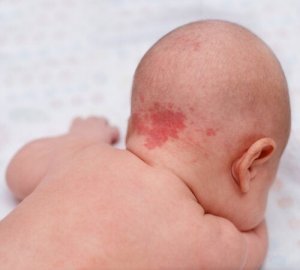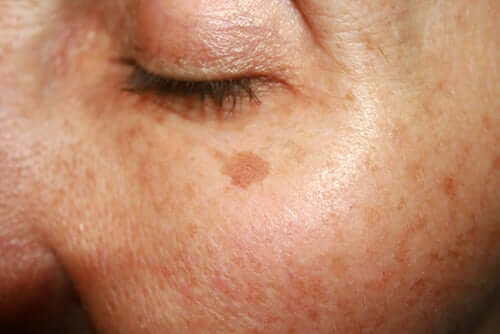Birthmarks and Moles: Why Do They Appear?

It isn’t uncommon for newborns to have rashes and pimples that disappear a few weeks after they’re born. However, some birthmarks and moles stay and might even intensify as the child grows up.
In most cases, birthmarks don’t pose a health problem. However, they affect someone’s appearance, for good or bad, depending on their characteristics. Only very rarely do they increase the risk of skin cancer or other skin diseases.
Overall, there are many myths about birthmarks. Some people think they’re the result of what a mother-to-be craved during her pregnancy or perhaps due to something they ate. However, there’s no scientific basis for these kinds of statements.
Birthmarks and freckles and moles, oh my!

Birthmarks are alterations in the skin color of a newborn. Sometimes these spots form during pregnancy, while other times they pop up a few days or weeks after delivery. Scientists believe that about 80% of people are born with a birthmark, a mole or some other form of mark.
Some of them stay throughout a person’s entire lifetime and others go away over time. The truth is that, regardless of their size, location, color or shape, you should always consult your pediatrician so they can examine them and determine if they’re harmless or not.
Many spots, especially the brown ones, aren’t visible in a baby immediately after birth. They have a lighter tone during the first months of life, and this is why they go unnoticed. However, they typically become darker over time.
Overall, there are different types of birthmarks with various characteristics.
Discover: What Causes Cherry Angiomas?
Pigmented spots
There are two types of birthmarks: pigmented and vascular marks.
In turn, there are some subgroups with different characteristics within these two large groups. When it comes to pigmented spots, there are:
- Freckles. These are the most common and can appear anywhere in the body. They sometimes multiply as the child grows. However, if there are many and bigger than 1/8 inch, it could be due to neurofibromatosis.
- Mongolian spots. These are bluish-gray and often located in the buttocks or the lower back. They’re more frequent in people with dark skin and almost always disappear during a child’s school age.
- Moles. These are present at birth and are also referred to as congenital nevi. They’re permanent. Also, they may either be flat or bulging and contain hair and can be brown, tan or black. The very large ones might be malignant.
Vascular spots

The main characteristic of vascular spots is they have tones ranging from pink to violet depending on the subtype. The most common are:
- Macules. They are the most common vascular spots and usually appear on the eyelids, nose, upper lip and the back of the head or neck. They have a faint red color and almost always disappear before 2 years.
- Hemangiomas. These may be superficial or deep. The superficial ones are bright red and the deep ones have a bluish tone. They typically disappear between 5 and 9 years of age. They usually appear on the head or neck.
- Port-wine stains. These mainly appear on the face, neck, arms or legs. They’re similar to the tone of Port-wine, hence the name, and will darken and thicken over time if left untreated. These never disappear on their own.
Read on: How to Identify Dangerous Moles
What causes birthmarks and moles?
Scientists still don’t know the precise reasons why birthmarks appear, nor why they stay or disappear.
However, in the case of pigmented spots, we know they’re due to an accumulation of melanocytes in a certain area of the skin. In these cases, there’s more melanin than there should be. Then, the skin makes that accumulation visible. Generally, they’re different shades depending on the depth of the skin layer where they’re located.
Usually, vascular spots are due to the improper formation of blood vessels. Oftentimes, there are more of these in a certain area or they’re wider than usual.
Of course, when in doubt, consult your pediatrician. They’ll be able to tell you if the birthmarks require further analysis or not. Only in counted occasions will they be too complex to reach a diagnosis.
All cited sources were thoroughly reviewed by our team to ensure their quality, reliability, currency, and validity. The bibliography of this article was considered reliable and of academic or scientific accuracy.
Guadalajara, P. C. A. (2009). Manchas feas, buenas y malas. J Am Acad Dermatol, 61(1), 1-14.
This text is provided for informational purposes only and does not replace consultation with a professional. If in doubt, consult your specialist.








